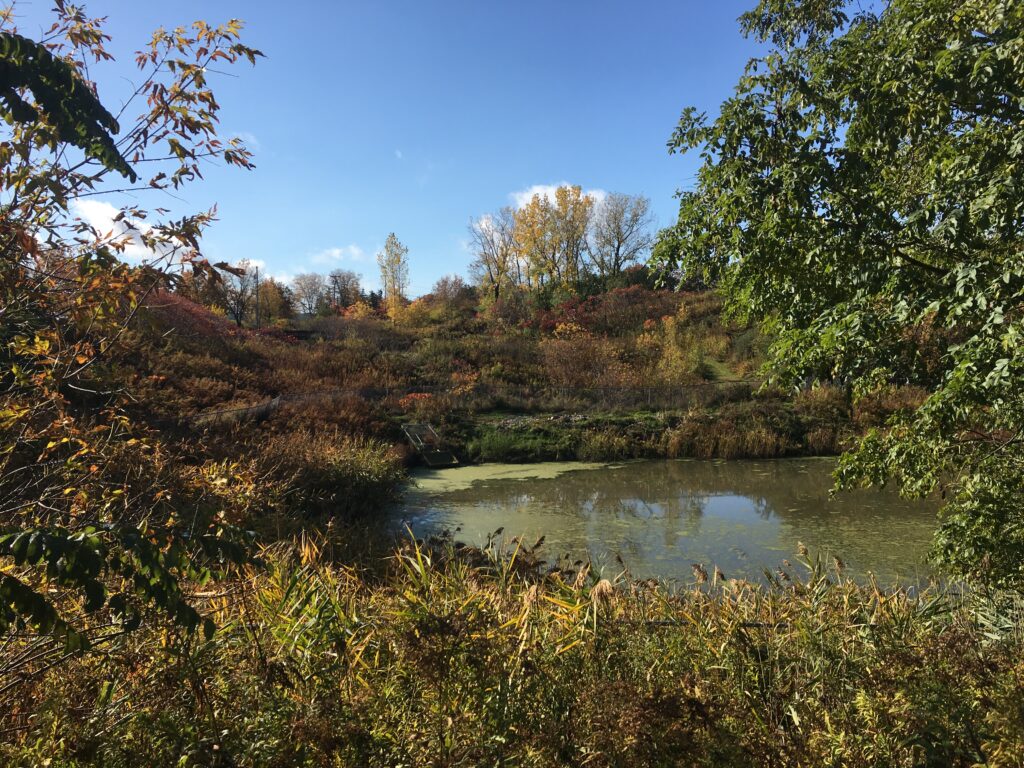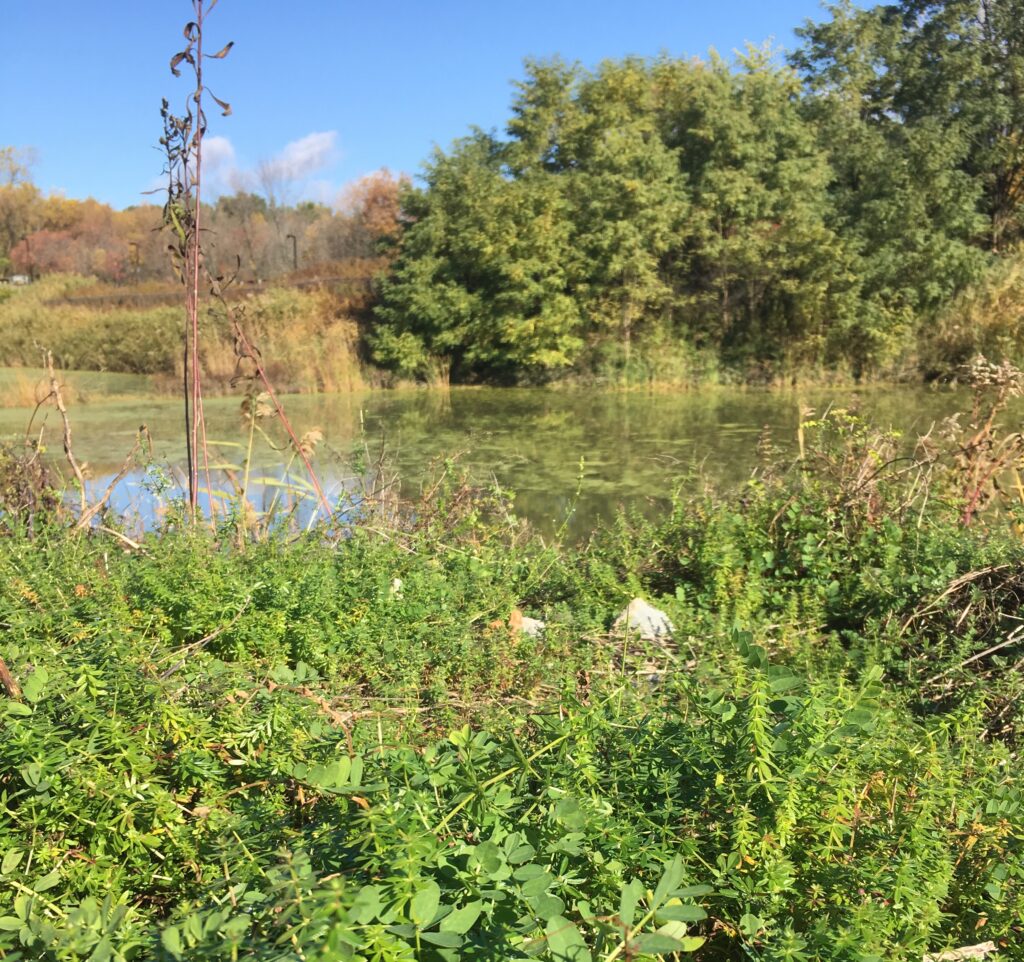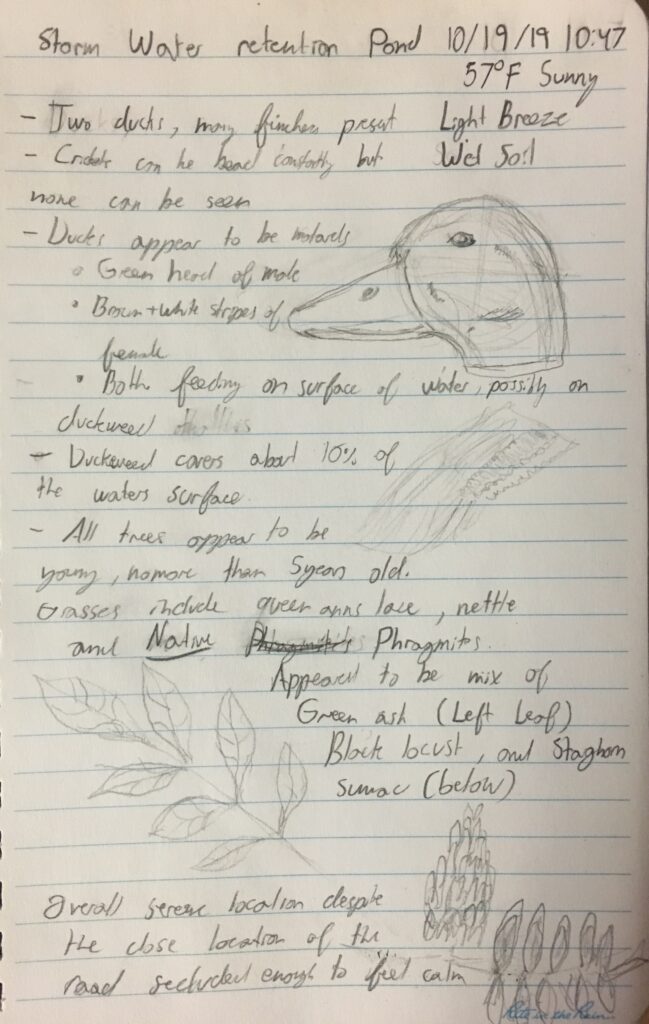A short bike ride from Harris Millis, across a busy street and down a road just past the entrance to Cenntenial Woods. Lies an area that is pleasantly serene, a stormwater retention pond. A man-made pond may seem like a strange place for a phenology observational location, but that very aspect I find to be the most important about the location.

I initially wanted to choose a location in Centennial woods but when I came across the pond I decided it was a far more representative of the area. It is a functioning system to reduce human impact on the environment that has become almost a small haven for wildlife. Despite it’s vicinity to busy I-89, the prevalent chirping of finches and crickets made it easy to forget about the hustle and bustle going on nearby.

After identifying several trees and plants in the area it appears that there is about a fifty-fifty ratio of native to non-native species in the area. Since the area must have been cleared a number of years ago to build the pond, I was somewhat surprised that there were any native species since non-native species generally can generally outcompete native species as an area begins to be reclaimed by plants. Regardless of the native or non-native nature of the plants in the area, there appears to be a plethora of berries, seeds, and duckweed for animal wildlife to sustain themselves on. Although there was no human traffic through the area I was joined on my first visit to the pond by a solitary male mallard duck. Upon my return, I found what I assume to be the same duck with a mallard female, bobbing away on the surface of the pond, eating the duckweed that is a prevalent feature along the bankside of the pond. Simply watching the ducks feed, I was able to lose track of time in that space. The only reason I didn’t spend several hours at the location was a reminder for my next class, If there was only a nice bench overlooking the pond it would be the perfect location to spend a wonderful Vermont fall afternoon.
